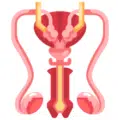Author(s)
Stefanie C. Nigro, PharmD, BCACP
Christine Dimaculangan, PharmD
Reviewed By
Deborah Sturpe, PharmD, BCPS
Mary Beth O’Connell, PharmD, BCPS
If you turn on the television these days, you will likely see commercials encouraging men to talk to their doctors about ‘the little blue pill’. And while the sexual innuendoes can be a little humorous, the commercials themselves promote awareness and prompt men to talk about erectile dysfunction. But where are the commercials and conversations about female sexual dysfunction (FSD)? FSD is a complex sexual health disorder influenced by psychological, hormonal, environmental, and biologic factors.1 Poor sexual health can cause distress and reduced quality of life. The Diagnostic and Statistical Manual, 5th addition, acknowledges 3 types of female sexual dysfunctions, including female sexual interest/arousal disorder (FSIAD).2 A formal diagnosis requires that the disorder causes marked distress or interpersonal difficulty. FSD effects women of all ages but is common among perimenopausal / postmenopausal women and may be related to a reduction in circulating estrogen. Low estrogen levels are associated with dyspareunia and decreased vaginal lubrication.1 Reduced sexual desire is linked with low testosterone and, to a lesser degree, low estrogen.
A 2013 systematic review showed estrogen therapy, alone or in combination with a progestogen, is associated with a small to moderate improvement in sexual function, particularly pain, in symptomatic or early menopausal women.3 However, the analysis did not specify the route of administration or estrogen composition. Oral estrogens increase sex hormone-binding globulin (SHBG) which lowers available free testosterone and thus may negatively impact sexual function.4 Transdermal estrogens are typically preferred because they lack a high first-pass effect and are not associated with risk of thromboembolic events.5 Additional research – directly comparing oral and transdermal preparations – was needed.
The Kronos Early Estrogen Prevention Study (KEEPS) was originally designed to test whether estrogen treatment reduces progression of atherosclerosis. This report was an ancillary study of KEEPS. The ancillary study was a 4-year prospective, randomized, double-blinded, placebo-controlled trial aimed to determine the effects of hormone therapy on sexual function.6 Healthy, recently menopausal women (aged 42 to 58 years with final menstrual period within the past 3 years and elevated FSH concentration and/or low estradiol concentration) were randomized in a 4:4:5 ratio to receive [1] oral-conjugated equine estrogen (o-CEE) 0.45 mg/day, [2] transdermal-estradiol (t-E2) 50 mcg/day or [3] placebo. Women randomized to the estrogen groups also received oral micronized progesterone 200 mg daily for 12 days each month to prevent endometrial overgrowth. Pertinent exclusion criteria are outlined in Table 1. Of the 727 KEEPS enrollees, 670 agreed to participate in the ancillary study.
Table 1: Exclusion criteria
|
Sexual function data were collected at baseline and months 18, 36, and 48 and were based on two measures: SHBG concentrations and the Female Sexual Function Inventory (FSFI) questionnaire. The FSFI questionnaire assesses 6 domains of sexual function including desire, arousal, lubrication, orgasm, satisfaction, and pain. The overall score (2 to 36) is the sum of the score of each domain with higher scores correlating with better sexual function. Because personal distress was not evaluated, women with scores less than 26.55 were categorized as having low sexual function (LSF), not sexual dysfunction.
The primary outcome was the overall FSFI score. Secondary outcomes included the individual 6 domains of the FSFI along with SHBG concentrations. Of the 670 participants, 209 were allocated to the o-CEE group, 222 to the t-E2 group and 257 received placebo. All 3 groups had similar baseline characteristics. The mean age was 52 years. Most participants were college educated (~72%), white (~ 77%), and married or in a relationship (~67%).
For the primary outcome, the mean FSFI score yielded a moderate yet significant increase by 2.6 points in the t-E2 group compared to placebo across 48 months (1.6 vs. -1.2; t-E2 vs. placebo, respectively). See Table 2. There was no difference seen when comparing o-CEE to t-E2 across 48 months. For the secondary outcomes, women in the t-E2 group had significant improvements in the following domains: desire (0.4 points), arousal (0.6 points), orgasm (0.5 points), and satisfaction (0.5 points) at 18 months (p<0.001, p=0.02, p=0.04, p=0.02, respectively) along with significant improvements in lubrication (0.3-0.6 points) and decreased pain (0.2-0.6 points) at 18, 36 and 48 months. Differences between tE2 and o-CEE were only apparent at 18 months solely for the desire and arousal domains.
Table 2: Changes in FSFI and SHBG from baseline over time6
|
Outcome |
o-CEE |
t-E2 |
Placebo |
Group comparison |
||
|
o-CEE vs. Placebo |
t-E2 vs. Placebo |
o-CEE vs. |
||||
|
Change in FSFI score (95% CI) p-value |
||||||
|
18 months |
1.0 0.11 |
3.1 <0.0001 |
0.3 0.64 |
0.7 3.9 |
2.9 0.001 |
-2.1 0.02 |
|
36 months |
1.3 0.05 |
1.1 0.11 |
-1.1 0.07 |
2.3 0.008 |
2.1 0.02 |
0.2 0.83 |
|
48 months |
-0.3 0.7 |
1.6 0.04 |
-1.2 0.06 |
1.0 0.33 |
2.8 0.005 |
-1.8 0.08 |
|
Change in SHBG level (95% CI) p-value |
||||||
|
36 months |
41.4 <0.0001 |
2.0 0.25 |
-1.9 0.22 |
43.4 <0.0001 |
3.9 0.09 |
39.4 0.0001 |
|
48 months |
33.9 <0.0001 |
2.4 0.21 |
-1.7 0.34 |
35.6 <0.0001 |
4.1 0.12 |
31.5 <0.0001 |
o-CEE = oral conjugated equine estrogen; t-E2 = 17β transdermal estrogen; FSFI = Female Sexual Function Inventory
SHBG = sex hormone-binding globulin
The proportion of women with LSF was lower after treatment with t-E2, but more women in the t-E2 group had LSF at baseline. There was no significant reduction in the odds of LSF with o-CEE. SHBG concentrations were stable throughout the study in the t-E2 and placebo groups without notable differences. SHBG concentrations increased with o-CEE treatment from baseline to 36 and 48 months but declined significantly from 36 to 48 months.
Advantages of the KEEPS ancillary study include the large sample size, long duration of follow-up, and the focus on early postmenopausal women, which “helped to eliminate confounders related to aging.”6 Subjective and objective measures were used to evaluate both the psychological as well as physiologic aspects of sexual function.
Despite the strong study design, the findings are limited by the restricted generalizability. Most participants were healthy, highly educated, white women and may not adequately reflect those known to commonly have LSF or FSD (i.e. comorbid depression or anxiety disorders, poor health status, prior hysterectomy, etc.).1 Relationship problems can also trigger LSF or FSD. Assessment of partner status and/or partner satisfaction with treatment was not performed and could have provided meaningful evidence of the correlation between low libido and interpersonal relationships. Distress, one the key diagnostic criteria for FSD2 was not evaluated, so it is unknown if estrogen therapy provides relief or if treatment was even needed. Finally, LSF was determined using the FSFI. The total FSFI score is valid for women with a heterosexual partner only.7 Questions related to sexual pain refer to penile penetration of the vagina and do not consider other forms of sexual intercourse. Several questions in the satisfaction domain cannot be answered if the woman does not have a partner; approximately 30% of the participants in this study did not. Therefore, the FSFI data is potentially misleading and the baseline FSFI scores may be falsely low.
None-the-less, the KEEPS study provides some useful insight. While this study did not include local estrogen, its findings add to previous research supporting the efficacy of local estrogen by affirming that similar results may be achieved with systemic estrogen therapy.3,8 The psychological improvements with estrogen were less remarkable- not surprisingly, as desire is influenced more by testosterone. Symptoms of arousal and desire only improved with t-E2 at 18 months, so these medications may not provide long-term benefits. Likewise, the higher SHBG concentrations seen in the o-CEE group at week 48 did not correlate with desire and arousal. This reiterates that hormonal deficiencies are not the only factor influencing sexual function, particularly in postmenopausal women. Partner-related issues, physical environment, medication use and other biologic factors play a role regardless of the type of treatment received. Lack of a strong and/or sustained effect of transdermal estrogen on FSD strengthen the need to consider a multimodal approach including couple’s therapy, sex therapy, pelvic floor exercises, and use of lubrication to name a few.1 While the results of the KEEPS study may not support long-term benefits of systemic estrogen, women who indeed have LSF may find short term improvement in their sexual function, particularly physical symptoms, with daily estrogen use.
Female sexual dysfunction is complex and poorly understood. The KEEPS study brings much needed awareness to the issue. Indeed, the FDA recently declared FSD a serious unmet medical need. Both ospemifene (Osphena®) and DHEA (Prasterone®) are FDA approved for dyspareunia. Flibanserin (Addyi®) is the only FDA approved treatment for hypoactive sexual desire disorder (now FSIAD), but its use is limited to premenopausal women. Current guidelines recommend using lubricants or low-dose vaginal estrogen therapies to promote comfortable sexual activity during menopause.9 Is drug therapy the answer to FSD? If so, where should our patient-oriented drug development and research efforts be directed? Let us know your thoughts!
- American College of Obstetricians and Gynecologists (ACOG). Practice bulletin No. 119: Female Sexual Dysfunction. Obstet Gynecol. 2011;117(4): 996-1007.
- American Psychiatric Association: Diagnostic and Statistical Manual of Mental Disorders, Fifth Edition. Arlington, VA, American Psychiatric Association, 2013.
- Nastri CO, Lara LA, Ferriani RA, Rosa-E-Silva AC, Figueiredo JB, Martins WP. Hormone therapy for sexual function in perimenopausal and post-menopausal women. Cochrane Database Syst Rev. 2013;(6):CD009672.
- Buster JE. Managing female sexual dysfunction. Fertil Steril. 2013;100(4):905–915.
- Straczek C, Oger E, Yon de Jonage-Canonico MB, Plu-Bureau G, Conard J, Meyer G, et al. Estrogen and Thromboembolism Risk (ESTHER) Study Group. Prothrombotic mutations, hormone therapy, and venous thromboembolism among postmenopausal women: impact of the route of estrogen administration. Circulation. 2005; 112: 3495–3500.
- Taylor HS, Tal A, Pal L, Fangyong L, Black DM, Brinton EA, et al. Effects of oral vs transdermal estrogen therapy on sexual function in early postmenopause. Ancillary study of the Kronos Early Estrogen Prevention Study (KEEPS). JAMA Intern Med 2017;177(10):1471-1479.
- Rosen R, Brown C, Heiman J, et al. The female sexual function index (FSFI): a multidimensional self-report instrument for the assessment of female sexual function. J Sex Marital Ther 2000 Apr-Jun;26(2):191-208.
- Suckling J, Lethaby A, Kennedy R. Local oestrogen for vaginal atrophy in postmenopausal women. Cochrane Database Syst Rev. 2006;(4):CD001500.
- Treatment of symptoms of menopause: An Endocrine Society Clinical Practice Guideline. J Clin Endrocrinol Metab 2015;100:3975-4011.


 iForumRx.org is a web-based community of practice designed to inform ambulatory care pharmacy specialists, pharmacy residents, and student pharmacists about high-quality, practice-changing evidence.
iForumRx.org is a web-based community of practice designed to inform ambulatory care pharmacy specialists, pharmacy residents, and student pharmacists about high-quality, practice-changing evidence.